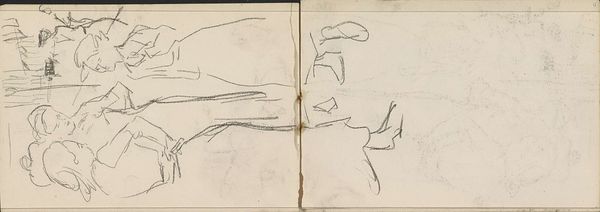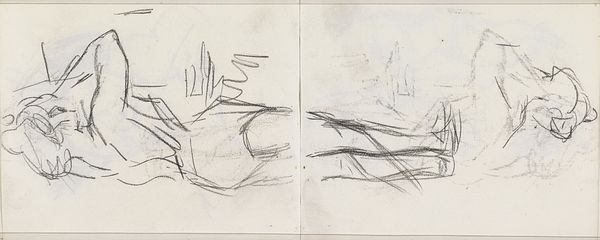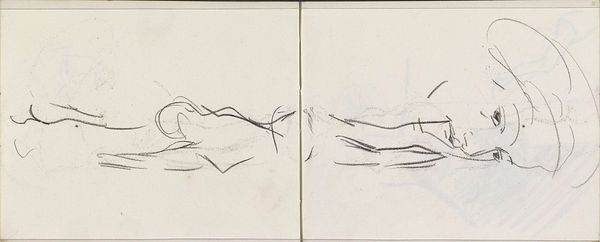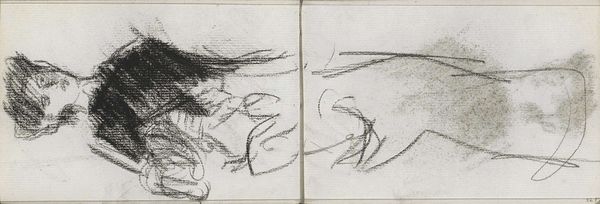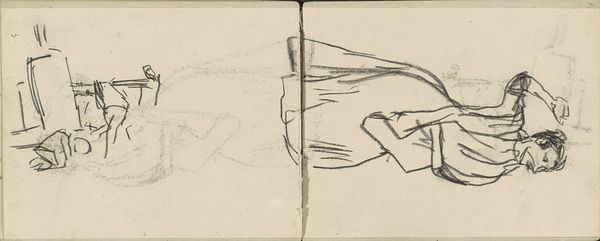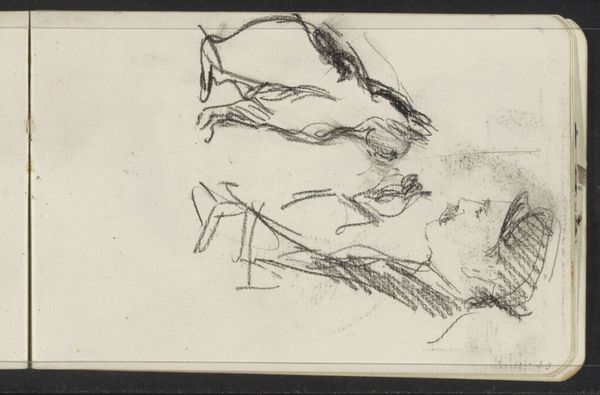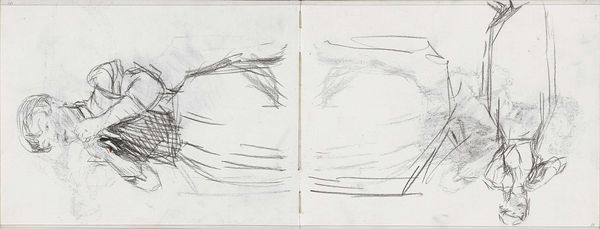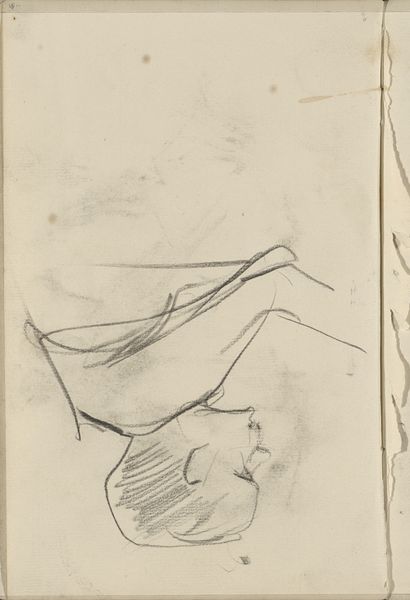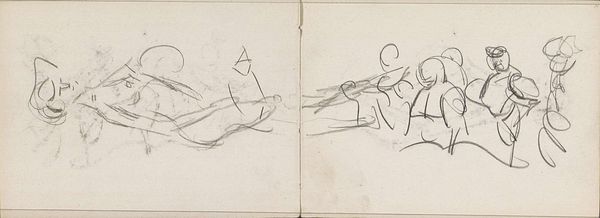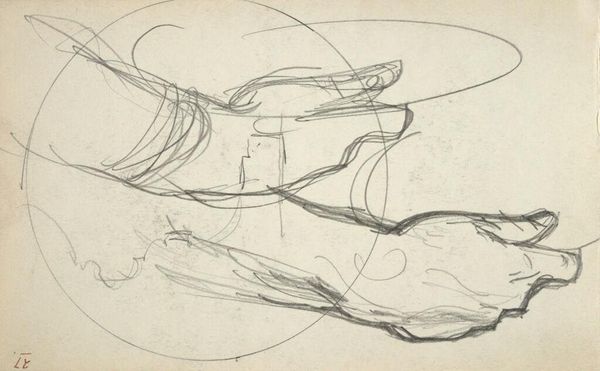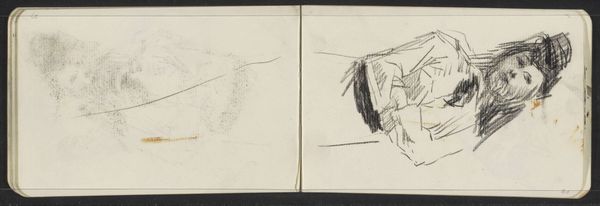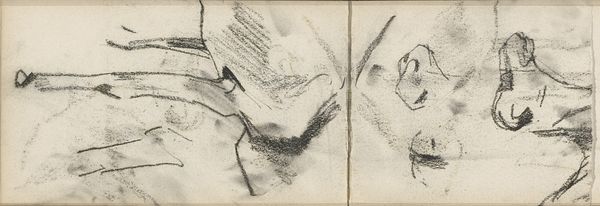
Copyright: Rijks Museum: Open Domain
Isaac Israels sketched this woman with her hair up, using graphite on paper. The sketch's openness reflects the changing social codes of the Netherlands at the turn of the century, when women were gaining more public roles. Israels came from an artistic family, his father Jozef was a respected member of the Hague School, part of a generation that helped form Dutch art institutions. Isaac’s looser style broke with those traditions. Like many artists in Europe, he was drawn to modern subjects, like fashion and urban life. In capturing the quick movements of modern life, his work is similar to that of Edgar Degas and Toulouse Lautrec in France. To understand this work better, we might investigate the exhibition history of sketches like these, and how they functioned in the market for art. Sketches allowed a quick and intimate style, but they were not always considered appropriate for public display. The cultural meaning of this work is always contingent on its historical and institutional context.
Comments
No comments
Be the first to comment and join the conversation on the ultimate creative platform.
